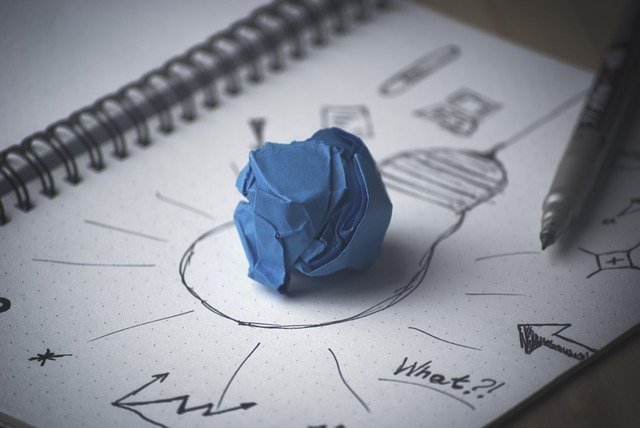
The following list is of things that were either invented or discovered by accident, and therefore didn’t happen because somebody set out to make it happen.
I’ve also included a bunch of well-known stories about these discoveries, just in case you’re not familiar with them.
Here are 16 things that were discovered and invented by accident
1. Penicillin

In 1928, Scottish scientist Alexander Fleming was investigating the antibacterial effects of various mold cultures when he discovered a mold culture that inhibited the growth of Staphylococcus bacteria.
Fleming later isolated and purified the active ingredient in this culture, which he named penicillin.
2. Margarine

In 1869, French chemist Hippolyte Mège-Mouriès was trying to create a butter substitute from beef tallow when he accidentally produced a new product that was smooth and spreadable.
He named this product margarine.
3. Teflon

In 1938, American Roy Plunkett was working with freon gas in his lab when he attempted to compress the gas into a liquid.
He later found that this failed experiment had created a white, waxy solid that was resistant to heat and chemicals – the very first Teflon.
4. Chocolate Chip Cookies

In 1930, American Ruth Graves Wakefield and her husband owned a tourist lodge in Massachusetts. One day, Ruth was baking a chocolate dessert and ran out of baker’s chocolate.
She substituted a semi-sweet chocolate bar cut up into tiny bits for the unsweetened chocolate, and she also reduced the butter and flour in her recipe by half.
The chocolate chip cookie as we know it today was born.
5. Post-it Notes

In 1968, Spencer Silver, a scientist at 3M, was working on developing a strong adhesive for use in aerospace applications. However, he discovered that the adhesive was not strong enough – but it did have a very weak stickiness.
This discovery led to the development of Post-it Notes.
6. Corn Flakes

In 1894, Dr. John Kellogg and his brother Will Keith Kellogg were running a health sanitarium in Battle Creek, Michigan.
They developed a product called Granose Biscuits to help their patients with digestion problems. However, this failed when they tried selling it as a baked product and discovered that nobody liked it very much.
They then reworked the recipe into a flaked cereal – Corn Flakes.
7. Saccharin
In 1879, John Logan Bell developed an alternative sweetening agent to sugar by processing the root of common plants like Jerusalem artichoke and chicory in order to produce a powdery substance.
He named this new sweetener Saccharin.
8. Play-Doh

In the mid-1940s, Noah McVicker was working for Kutol Products in Cincinnati, Ohio when he stumbled upon a wallpaper cleaner that they sold under the brand name of Play-Doh.
The dough was originally intended to be used as an easy way for children to make handprints on the new colored wallpaper of the era.
However, children found a great deal of fun using it as modeling clay, and so Kutol reworked their marketing plan around playdough instead of wallpaper cleaner.
9. Potato Chips

In 1853, George Crum was working as a chef at Moon’s Lake House in Saratoga Springs, New York. One day, a patron sent back his order of French fries because they were too thick and soggy.
Crum decided to slice the potatoes so thin that they would be impossible to fry properly, and then he fried them in hot oil. The end result was a crispy potato chip that the patron enjoyed so much that Crum began to serve them on the regular menu.
10. The Slinky

In 1943, naval engineer Richard James was working on a new type of springs for use in sensitive instruments aboard ships. One day, one of these springs fell off his desk and began to “walk” across the floor.
This sparked the idea for The Slinky.
11. Coca-Cola

In 1886, John Pemberton was a pharmacist in Atlanta, Georgia who was trying to create a new medicine that would help with problems such as morphine addiction and other pain relief issues.
He came up with a mixture of coca leaves and cola nuts and christened it “Pemberton’s French Wine Coca”.
However, he soon discovered that this concoction was useless as medicine but tasted great when mixed with carbonated water.
He quickly reworked his recipe and marketed it to fellow pharmacists with the name of Coca-Cola.
12. Playmobil
In 1968, German toy designer Hans Beck began working on a series of miniature figures that were designed to be used with various playsets.
However, this idea was not particularly successful until the mid-1970s when he redesigned his toy figure into small things that children could use in their own imaginary play worlds.
13. The Frisbee

In 1871, Yale students William Russell and Walter Manley were playing with a cake tin lid on the campus green when they came up with the idea to toss it back and forth.
They named this new game “Frisbie” after their favorite pie company, Frisbie Pie Company.
- See also: The history of how camera invented
- See also: How was the telephone invented evolved and developed?
14. The Dustpan

The modern dustpan was invented in 1882 by Danish janitor Jens Wilfred Pedersen. He got the idea after watching his wife sweep dirt under the door of their cabin with a broom.
He fashioned a crude prototype out of wood and wire and then filed for a patent.
His design was however only useful for sweeping dirt away from the middle of a room, and so Pedersen went on to develop a model that had a wide-open mouth that enabled it to sweep up dirt that was located near walls.
15. Liquid Paper
In 1951, Bette Nesmith Graham worked as a typist at Texas Bank & Trust when she came up with the idea to create a white paint that could be applied to typing errors made on paper forms. She went home and created the first batch of her new invention, but it took several more years before her creation was available to market under the name of Liquid Paper.
16. Bubble Wrap

In 1957, Al Fielding and Swiss inventor Marc Chavannes were working for a company that made plastic shower curtains when they came up with the idea to add small bubbles to the bottom of the curtain in order to make it slightly more comfortable.
However, one day they left some pieces of this plastic on a heated machine and ended up producing sheets of bubble material.
They quickly realized the potential for this new product and began to market it as Bubble Wrap.
Conclusion
As you can see, many of the world’s most popular inventions were actually the result of accidental discoveries.
This just goes to show that you never know when you might come up with your next big idea!
So don’t be afraid to experiment and always keep an open mind. Who knows, you might just stumble upon the next million-dollar invention!



